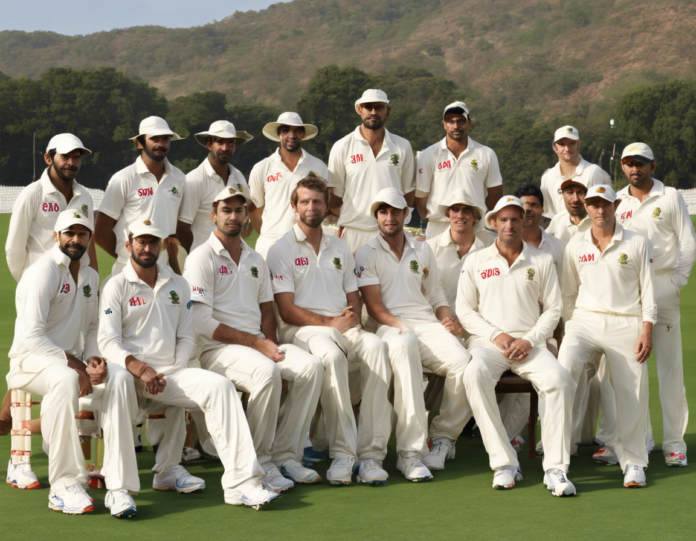Introduction
Cricket is a bat-and-ball game that is played between two teams, each consisting of 11 players. While the rules of the game might vary slightly in different formats such as Test cricket, One Day Internationals (ODIs), and Twenty20 (T20) cricket, the basic principle of having 11 players in each team remains constant. In this comprehensive guide, we will delve into the role of each player in a cricket team, the different positions they occupy, and the strategies involved in team composition.
Understanding the Composition of a Cricket Team
1. Batsmen:
- Openers: The first two batsmen who start the innings are known as the openers. They play a crucial role in facing the new ball and setting the tone for the innings.
- Middle-order: Batsmen occupying positions 3, 4, and 5 are considered the middle-order. They are responsible for stabilizing the innings and scoring runs consistently.
- Lower-order: Batsmen from positions 6 to 11 fall under the lower-order category. They are often referred to as the 'all-rounders' as they contribute both with the bat and ball.
2. Bowlers:
- Fast bowlers: These bowlers rely on pace and swing to dismiss batsmen. They play a key role in providing early breakthroughs and putting pressure on the opposition.
- Spin bowlers: Bowlers who specialize in spin variations like off-spin, leg-spin, and left-arm spin fall under this category. They are instrumental in controlling the run-rate and taking wickets in the middle overs.
3. Wicketkeeper:
- The wicketkeeper is responsible for catching the ball, stumping batsmen, and assisting in run-outs behind the stumps. They play a crucial role in the fielding unit and provide vocal support to the bowlers.
4. All-rounders:
- An all-rounder is a player who can contribute with both bat and ball. They add balance to the team by providing flexibility in team selection and enhancing the overall depth of the squad.
5. Fielders:
- Fielders play a vital role in saving runs, taking catches, and effecting run-outs on the field. Good fielding can turn the course of a match and put pressure on the opposition batsmen.
Team Strategies and Player Roles
1. Game Situation:
- The composition of a cricket team is often tailored to the specific game situation. For instance, a team might opt for an extra batsman in the lineup if they are chasing a big total or include an additional bowler to exploit favorable bowling conditions.
2. Pitch Conditions:
- Teams analyze the pitch conditions before a match to determine the ideal combination of bowlers and batsmen. A spin-friendly pitch might prompt a team to include more spinners in the playing XI, whereas a green-top pitch could favor seam bowlers.
3. Opposition Analysis:
- Studying the strengths and weaknesses of the opposition plays a crucial role in team selection. A team might choose to include specific players based on their ability to counter the strengths of the opposing team.
4. Player Form:
- The current form of players also influences team selection. In cricket, players go through peaks and troughs in form, and it is essential to have a balanced team with in-form players occupying key positions.
Frequently Asked Questions (FAQs)
1. How is the captain of a cricket team selected?
- The captain of a cricket team is typically appointed by the respective cricket board or team management based on factors such as leadership qualities, experience, and tactical acumen.
2. Can a player be a specialist in both batting and bowling?
- Yes, there are players known as all-rounders who excel in both batting and bowling departments. They play a crucial role in providing balance to the team.
3. What is the role of a 12th man in cricket?
- The 12th man in cricket serves as a substitute fielder who can field in place of an injured player. They are not allowed to bat or bowl unless they are named as a replacement for an injured player.
4. How do teams decide on the batting order in cricket?
- The batting order is usually decided based on the player's batting position in domestic cricket, their current form, and the game situation. Openers are generally the first to bat followed by the middle-order and lower-order batsmen.
5. Can a player be replaced during a match if they get injured?
- In cricket, a player who gets injured during a match can be replaced by a substitute fielder who is not a part of the playing XI. However, the substitute cannot bat or bowl unless named as a replacement for the injured player.
Conclusion
The composition of a cricket team is a strategic decision that involves balancing various factors such as player roles, form, opposition analysis, and pitch conditions. Each player in the team has a specific role to play, whether it's as a batsman, bowler, wicketkeeper, all-rounder, or fielder. Understanding the dynamics of team composition and player roles is essential for cricket enthusiasts to appreciate the nuances of the game and analyze match strategies effectively.

